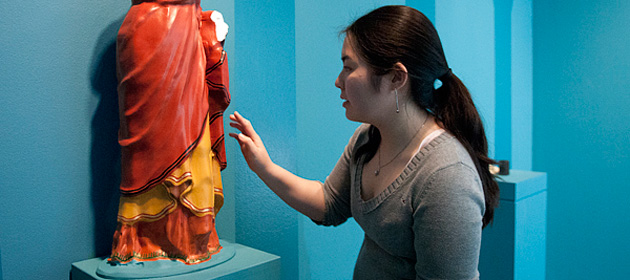An exhibit currently on display at Stanford University’s Cantor Arts Center resurrects a liveliness rarely associated with Ancient Greco-Roman sculpture. When asked to conjure an image of Roman décor circa the year zero, sparkling white marble generally abounds. It turns out that a closer look at these millennia-old figures reveals that they were once covered in vibrantly-colored paints. In an article about the exhibit, Stanford News describes how undergraduate student Ivy Nguyen used ultra-violet light to find trace amounts of pigment on the surface of ancient sculptures, still present after over two thousand years:
While the technique is not new, Nguyen went beyond that with the use of x-ray fluorescence (XRF), commonly used in conservation sciences. XRF can find traces of pigment that are invisible to the unaided eye.
Nguyen’s ultraviolet imaging with the black light reveals “ghost images,” showing the areas that might be promising to test. The XRF reveals what’s in those ghost images.
Although other exhibitions have focused on painted Greek and Roman statues, this exhibition focuses on the science as well as the art, taking the visitor through the laboratory process with cases displaying pigments used in ancient times, wall-mounted images of the analysis and small, painted terra cotta works from Cantor’s ancient collection that were used as controls in the study.
Two versions of a restored sculpture are on display at the exhibit. One version includes colors that were found through testing while the other, taking into consideration that only base layers of paint have survived, includes additional layers of painted decorations that may more closely resemble the originals.
Through some combination of the quality of ancient pigment and the creative application of modern scientific technology we find ourselves able to catch a more accurate glimpse of a civilization long fallen. To see the painted replicas of Stanford’s Maenad sculpture (and to get some ideas about what materials to use for your next paint job), visit the Cantor Arts Center, which is free to the public. The exhibit ends on August 7th.
